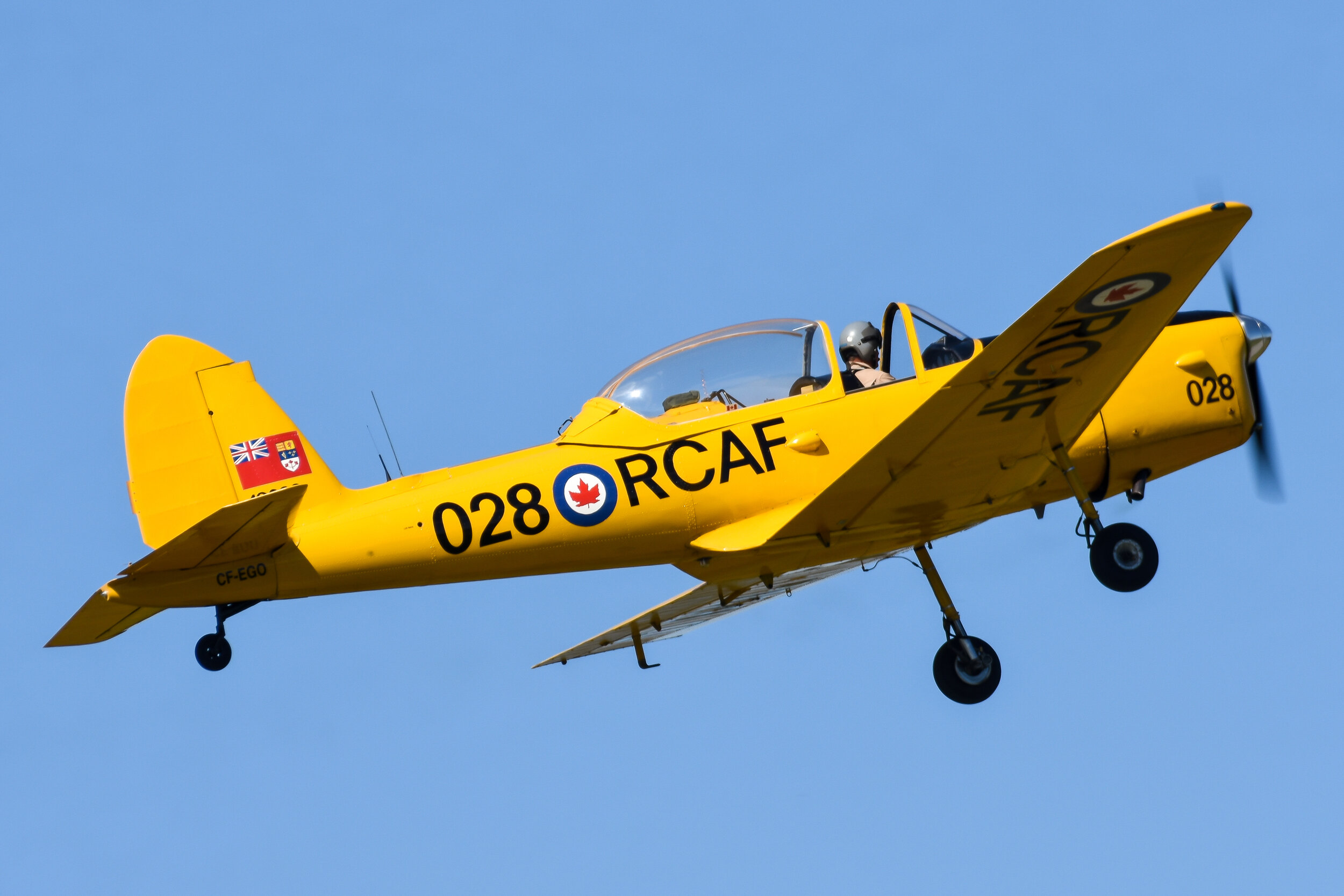
The Tim Timmins
CHIPMUNK
GUS CORUJO (GUSAIR) PHOTO
Vintage Wings of Canada Foundation and Don Buchan
de Havilland Canada DHC-1 Chipmunk
de Havilland Canada DCH-1 Chipmunk, RCAF Serial No. 18028, is dedicated to TWA Captain Tim Timmins, a long-time volunteer and friend of Vintage Wings of Canada. Tim flew CF-100 Canuck fighters with 409 Squadron, RCAF before joining Trans World Airways where he flew the Lockheed Super Constellation, Boeing B707, B727 and finally the magnificent B747, the Queen of the Skies.
The de Havilland Canada DHC-1 Chipmunk is a tandem, two-seat, single-engined primary trainer aircraft designed and developed by Canadian aircraft manufacturer de Havilland Canada. It was developed shortly after the Second World War and sold in large numbers during the immediate post-war years, being typically employed as a replacement for the de Havilland Tiger Moth biplane.The Chipmunk was the first postwar aviation project conducted by de Havilland Canada. It performed its maiden flight on 22 May 1946 and was introduced to operational service that same year. During the late 1940s and 1950s, the Chipmunk was procured in large numbers by military air services such as the Royal Canadian Air Force (RCAF), Royal Air Force (RAF), and several other nations' air forces, where it was often utilised as their standard primary trainer aircraft. The type produced under licence by de Havilland in the United Kingdom, who would produce the vast majority of Chipmunks, as well as by OGMA (Oficinas Gerais de Material Aeronáutico) in Portugal.
Many Chipmunks that had been in military use were sold to civilians, either to private owners or to companies, where they were typically used for a variety of purposes, often involving the type's excellent flying characteristics and its capability for aerobatic manoeuvres. More than 70 years after the type having first entered service, hundreds of Chipmunks remain airworthy and are in operation around the world.
Photo via Don Buchan
Reinhard Zinabold Photo
Photo via Don Buchan
Gus Corujo Photo
Mike Henniger Photo
Pierre Langlois Photo
Photo via Don Buchan
Young Pilot Officer Timmins and Captain Timmins, TWA 747 Captain
Tim Timmins (left) on CF-100 Canucks at RCAF Station Comox
The dedication panel.











